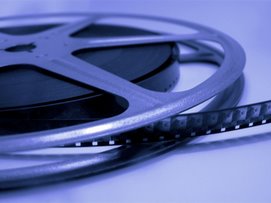
2010; science-fiction, USA, 1984; D: Peter Hyams, S: Roy Scheider, Helen Mirren, John Lithgow, Bob Balaban, Saveliy Kramarov, Keir Dullea

In 2010, years after the mysterious failure of the Discovery mission to explore the incomprehensible black monolith near Jupiter, Dr. Heywood Floyd is approached by a Soviet scientist who proposes to join him on a second space mission to explore what happened there. Leaving his wife and child on Earth, Floyd wakes up from cyrosleep on the Soviet spaceship Leonov: since there are tension on Earth between the US and the Soviet Union, the joint American-Russian crew is uneasy about cooperating together. They recover Discovery floating around Io's orbit and turn on computer HAL 9000 again. Floyd receives the apparition of Discovery's astronaut Dave who warns him to leave Jupiter. The crew obeys while the monolith creates a hole in Jupiter, and then makes a new star out of it.
A retrospect of "2010" is very interesting since director Peter Hyams actually dared to craft a sequel to a classic that some consider even the greatest science-fiction film of the 20th Century, Kubrick's "Space Odyssey", which by its audacity is almost equal to someone making a sequel to Welles' "Kane". Even though some critics cynically commented how in "2010" actors like Roy Scheider, John Lithgow and others are just visting the locations of where a masterwork was once shot, Hyams in reality made quite a sharp, tight and competent film whose mood was only enhanced by a crystal clear cinematography and absolutely fantastic special effects that seem even more convincing than many computer generated images 20 years later. The original "Odyssey" offered a few deeply esoteric messages about human advancement, even enlightenment, while this film seems to be pulling the viewers leg at times since it doesn't even try to explain the mystery, but even ignores its ending to instead focus on the joint American-Soviet space mission around Jupiter's orbit, offering a few more "mainstream" and understandable space adventures - one of the most acclaimed moments is the 7-minute long sequence where the two astronauts in space are trying to "fly" to the wildly rotating Discovery spaceship, a moment so fixated and filled with juicy details (one of them looks below his feet and spots only the giant, red surface of moon Io) that it's amazing, while the most panned ideas where the pointless comeback of astronaut Dave from the first film and the last third that doesn't have any sense. Among many natural "fantastic" scenes of space, there was also one unusual: the cult finale with the giant 'black hole' in Jupiter, which is a sight to behold.
Grade:++





No comments:
Post a Comment